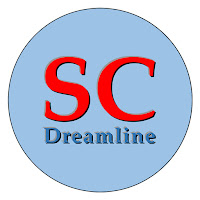10 năm học Toán không biết dùng làm gì?
dân Anh học lại đại số (toán) để giải quyết cuộc khủng hoảng chuỗi cung ứng...
-----
Algebra (đại số): the maths working to solve the UK’s supply chain crisis (khủng hoảng chuỗi cung ứng)
...It’s likely that you have mixed feelings (cảm xúc lẫn lộn, vừa yêu vừa ghét) about algebra. Even if you could knuckle down (đầu hàng, chịu khuất phục) and manage it in school, you probably wondered (có lẽ tự hỏi) why it was important to solve an equation involving x raised to the power of 2 or why you should want to find a and b when a + b = 3 and 2a – b = 12. You might even feel that your scepticism (mối hoài nghi) has been vindicated (minh oan; xác nhận, chứng minh là đúng): the chances are that you have never done algebra in your post-school life. But that doesn’t mean that the jumble of letters, numbers and missing things that we call algebra is useless. Whether it’s supermarket groceries, a new TV or a parcel from Aunt Emily, they all reach your home through some attempt to solve an equation and find the missing number. Algebra is the maths that delivers.
Algebra has been around for millennia. The word comes from the Arabic word al-jabr in the title of a ninth-century book on calculation, but ancient peoples in Babylon, India, China and Africa had been solving algebraic equations long before that. It is, essentially, the art of finding unknown numbers (nghệ thuật tìm ẩn số), given certain others. The sought-after hidden factor was usually referred to in Latin as the cossa, or “thing”, and so algebra was often known as the “cossick art”: the art of the thing.
...“Stocking warehouses is a complicated problem,” says Anna Moss, principal data scientist (khoa học dữ liệu) at Ocado Technology. Moss’s role involves ensuring that the amounts of stock ordered from suppliers are sufficient to satisfy customer demand, but do not exceed the warehouse storage capacity and, importantly, minimise food waste.
Moss, you might not be surprised to learn, is a maths whiz. She has worked for Intel in the past and frequently publishes her mathematics research in academic journals. Applying such expertise to grocery delivery might seem like overkill, but the logistical puzzles involved are every bit as challenging as anything she has faced elsewhere.
The maths of logistics starts with algebra – linear algebra, to be precise. This is algebra where the variables (data about warehouse stock, for example) tend to be processed in ways that don’t depend on the square, the cube or any other power. So y = 4x would be an operation in linear algebra; y = 4x2 would not.
Linear algebra explores solutions for sets of equations that together contain all you need to find out the relationships between the variables. Its equations are, essentially, mathematical spreadsheets where a single operation can process a huge array of data, expose the relationships between them all and allow the mathematician to optimise (tối ưu hóa) one particular chosen outcome. The same trick lies behind Google searches, flight scheduling and parcel delivery (giao hàng); even the way your virtual shopping basket is delivered to your computer screen involves linear algebra in the logistics of routing information through the internet.
Tags: skill


Post a Comment